![]()
![]()
South Rona 1971
SOUTH RONA EXPEDITION 26th July- 15th Aug 1971
Age 16-17
Leader: Roger Weatherley
Officers: Mark Rayne, Greg Surrell, Mike Cunliffe Lister, Nigel Padfield.
Boys: Simon Manning, Timothy Bell, Brian Mahler, David Stredder, Richard [Ian?] Tope, Michael Griffin, George Sloane Stanley,
Nigel Oates, Philip Slatter, Ian Gough, Christopher Collins, Kevin Jones, Stephen Gibbins, Nigel Saunders,
Keith Broadbent, Paul Gill, James Livingstone, Joe Neal, Stephen Pope, Graham Holdup, Ian Burgess.
The name Richard Tope appears in the expo membership in the 1971 report but Ian Tope is used for reports he's written. Also Mark Rayne has labelled his photos a Ian?
|
LEADER'S REPORT Where to begin? At the beginning. Well, the beginning was hardly promising. We set off without a work boat, with the wrong fuel for the boat we did have, and with the prospect of an enormous manual grind moving equipment from Big Harbour to the Camp-site. Through the leader's incompetence we had almost left the personal luggage on Euston Station, and it was midnight before the last members of the Expedition finally set foot on the island - tired and convinced of their own insanity (and mine). What happened next is a credit to everyone. Looking back, this testing time at the beginning set the tone for the rest of the Expedition. The equipment was moved, and our occupation of Dry Harbour began - gas cylinders, black boxes and all. All of us found South Rona a superb island. Looking ridiculously small on the map, it yielded much project material and many recreational opportunities. There were fifteen different pieces of project work - including comprehensive studies of ornithology, settlement at Dry Harbour, seashore ecology and geology. We (or some of us) actually enjoyed bathing in the rock pools; Nigel Padfield and Mark Rayne led some climbing; the fishermen broke the Raasay pollack record from 1964 - and the music was very good. Greg Surrell & Co. sketched beautifully. Paradise!. The initial grind was more than worth while. Summarizing the expedition concisely is very difficult. From what may be read elsewhere it is clear that we were very active and that the island has great potential. Yet we were limited by a lack of equipment – especially boats and canoes, but also good climbing gear. This said, however, I must applaud the spirit of resourcefulness which developed - in true S.H.S. style! We faced and defeated many problems, and lived creatively to the limits of our environment. From the shore and our inflatable dinghy, kindly loaned by Mr Livingstone, some of us fished enthusiastically (and one of us was pulled in by a monster). We sang, discussed, baked 72 lbs. of bread and ate it all; we marvelled at the skill of the sheep dogs when the flock was rounded up for shearing. We were amazed by the ruggedness of the island; we enjoyed a few glorious days in otherwise showery weather. I never heard anyone complain unjustly. Of course, the Expedition was full of individuals, each one with the freedom to pursue what he thought valuable. For many this involved really serious project work, and the standard reached was very high. Some others passed a more relaxed time, mainly staying quite close to the camp. I only hope that everyone was equally stimulated by what he did regardless of his disposition. |
Thanks to Mark Rayne for the Photos. |
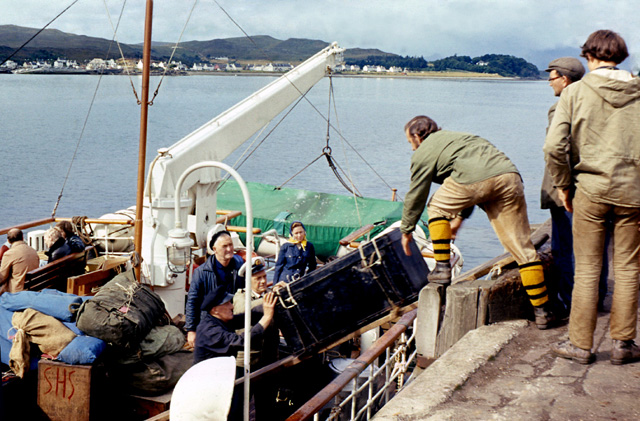 Loading the M.V. Loch Arkaig at Kyle, note the S.H.S tea-chest, and one of the 'black boxes'. being loaded. Kyleakin is in the background. Nigel Padfield in the yellow socks. Photo: Mark Rayne
|
|
Sketch of South Rona camp site by Greg Surrell |
Singling individuals to thank is invidious but I must mention the officers. They were few in number, but magnificent value, and the success of the Expedition owes a lot to their hard work. There are many others to thank, too - Mr Cameron and the Crew of 'DANCING CLOUD' for transporting us so efficiently; Mr Edwards and the Applecross Estate for the use of their boat; Mr Thorburn and all the lighthouse keepers on Rona for their untiring hospitality and interest in us and, of course, the Owners of the island for allowing us to come. Mr Robson and Mr Frazer allowed us to use the Scout Hut in Kyle and we thank them sincerely. Finally, the 'backroom' staff within the Society without whom no Expedition is possible. On the last Sunday of the Expedition some of us went across to the cave on the east side of the island to think about man in his environment. Here, feeling the purity and power of Rona, we found civilised man healthily in perspective - we valued the privilege of viewing our Society from a distance. We were all genuinely sorry when it was over. As we sailed away with 'DANCING CLOUD' under full sail and engines, Rona seemed so small and low in the sea. It seemed incredible that we had lived there for nearly three weeks, yet all of us had memories which proved the time well spent. Perhaps it will be the sunsets over Skye, the remarkable mirage over the Long Island, the cave, the climbing, a rock pool or the seal colony which will provide the most lasting memory for each of us. For myself, I remember lying in my tent late one night when only a couple of musicians remained up. A ballad drifted out from the marquee - softly, barely audible -
I hope Rona planted one vision at least on everyone who came. -Roger Weatherley |
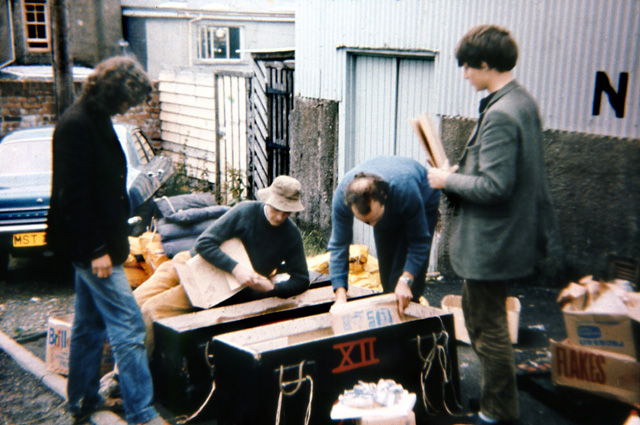 |
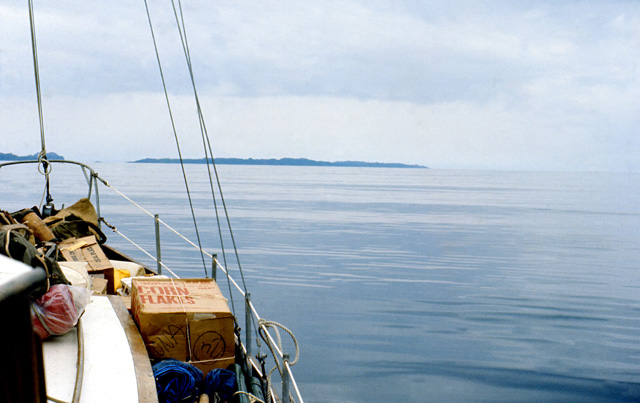 |
|
The advance party checking equipment at Fort William. Photo Mark Rayne |
Dancing Cloud approaching S Rona, all the paraphernalia of an S.H.S expedition on board. Photo; Mark Rayne |
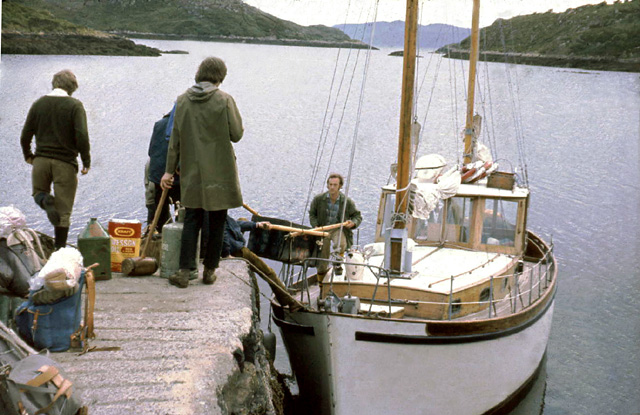 |
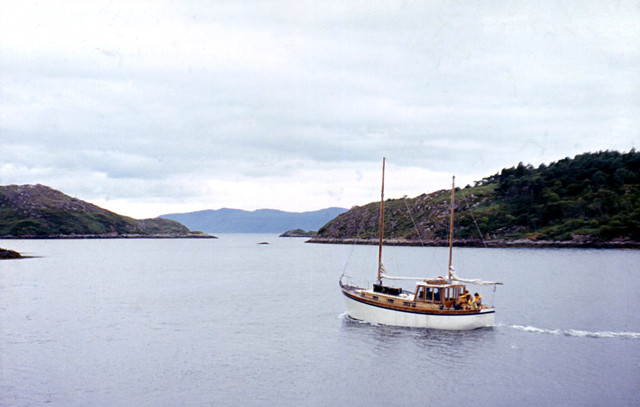 |
|
Unloading equipment from Dancing Cloud at Big Harbour. Photo Mark Rayne |
Dancing Cloud in Big Harbour, South Rona. Photo: Mark Rayne |
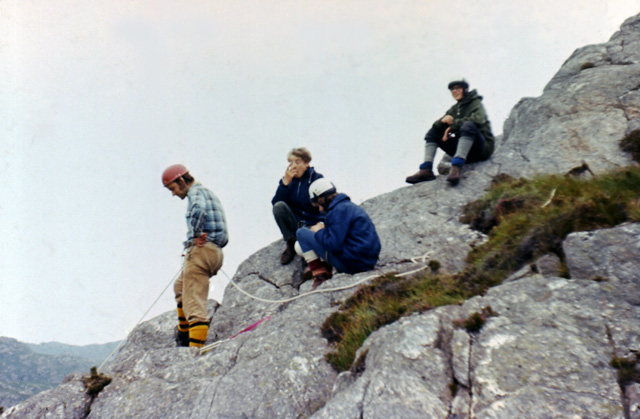 |
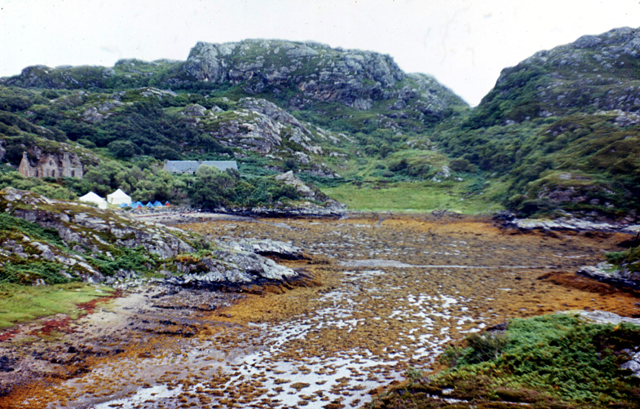 |
||
|
Nigel Padfield belaying on a climb near the camp. Photo Mark Rayne |
The campsite, Dry Harbour. Photo: Mark Rayne |
||
| The following photos were added on 20th August 2013 from the collection sent to me by Mark Rayne. There were around 150 for this expedition so I have cleaned up some more of them to submit here. Also, as there are photos to illustrate various aspects of project work I have in some cases included the write up of the project from the 1971 report. | |||
|
|
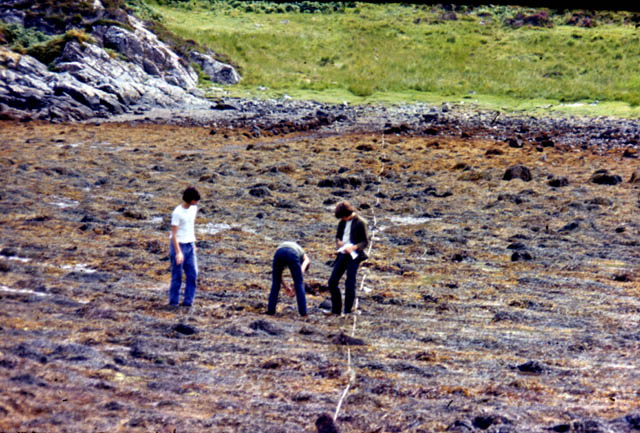 |
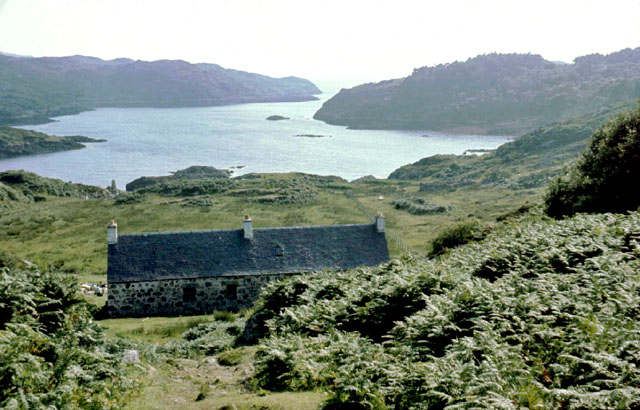 |
|
| Shoreline ecology (pos. Nigel Saunders, Bunge Livingstone?) | Shoreline ecology project with transect (see report below) | ||
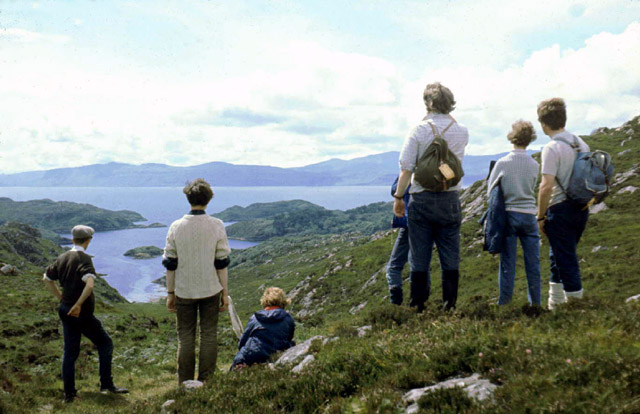 |
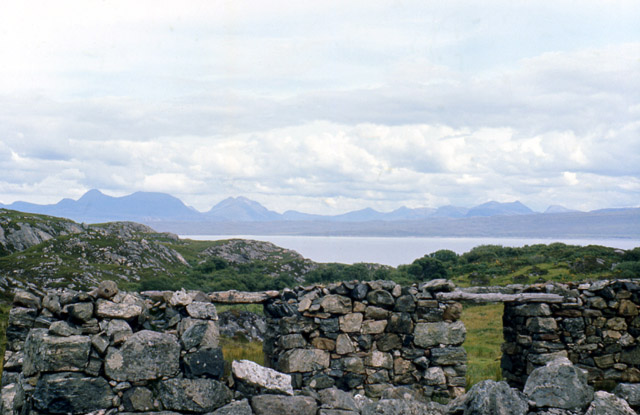 |
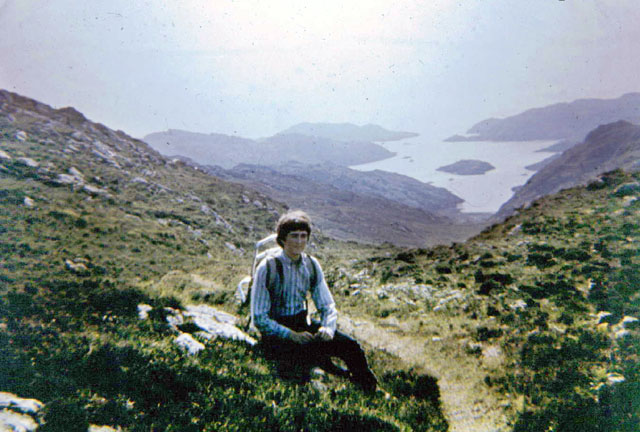 |
|
| View over Big Harbour | Ruined croft. | Top of South Rona | |
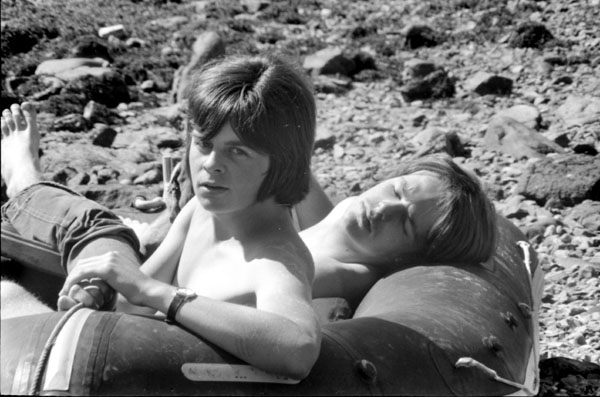 |
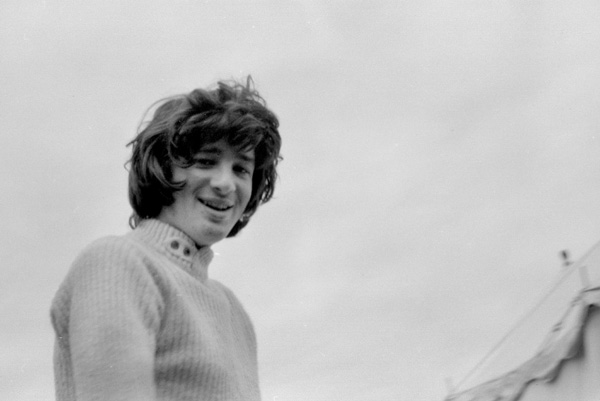 |
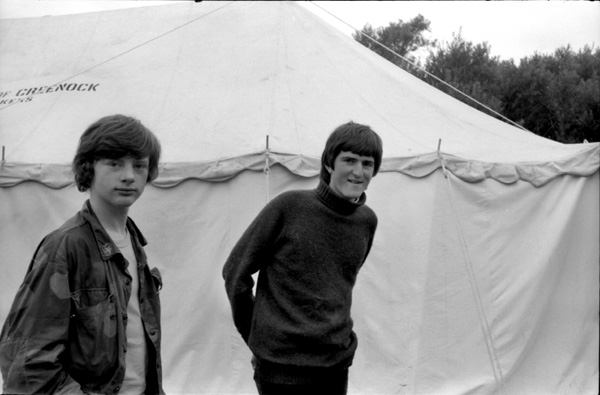 |
|
| James (Bunge) Livingstone and Richard Tope | ← Richard Tope (both photos labelled Ian Tope?) |
George Sloane Stanley and Philip Slatter |
|
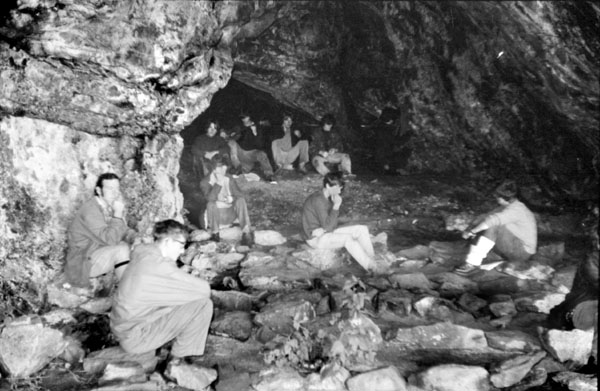 |
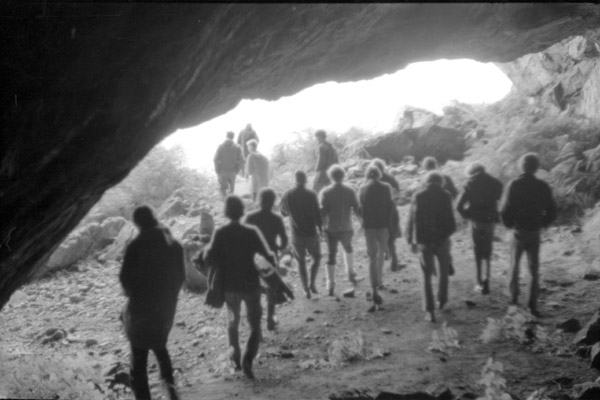 |
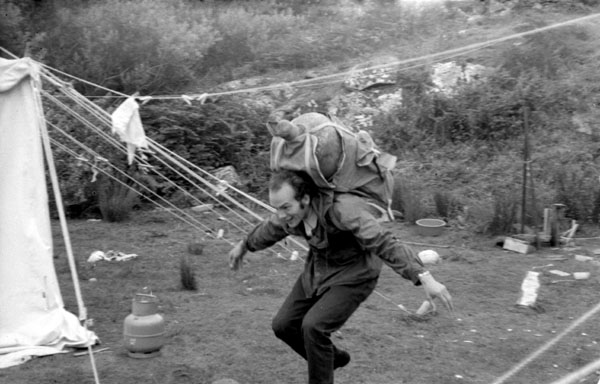 |
|
| Service in the cave | End of the service in the cave | Gas bottle delivery. | |
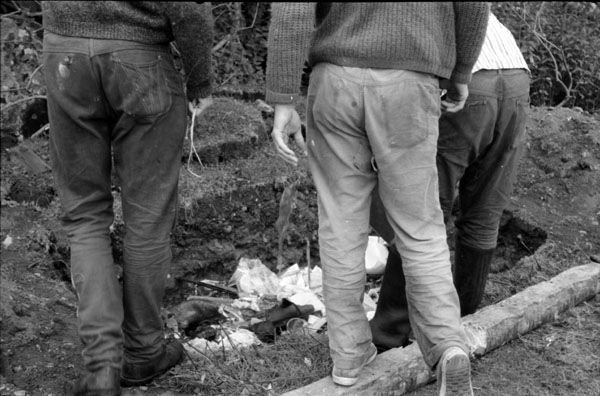 |
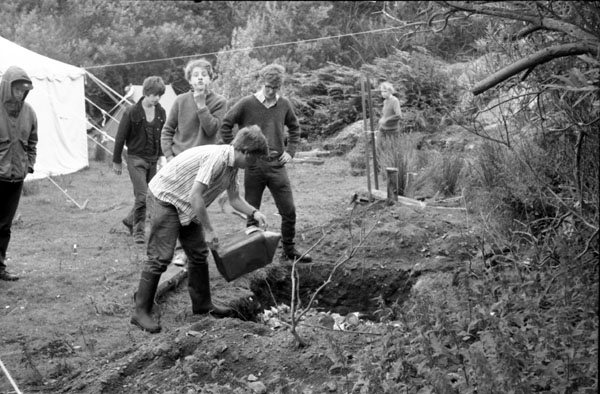 |
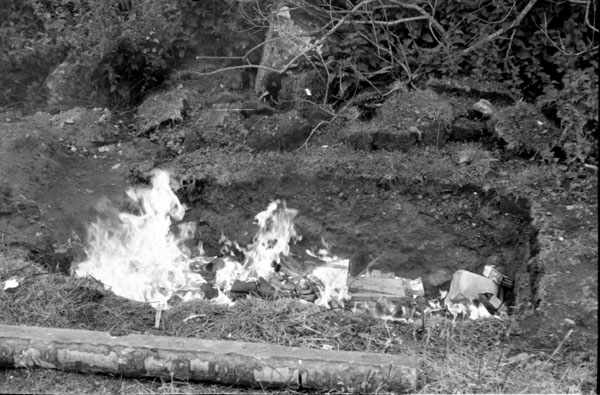 |
|
|
Burning the rubbish in the pit, Roger Weatherley with the fuel can. |
|||
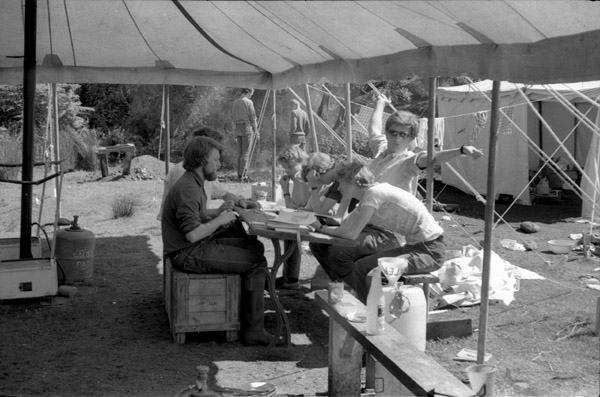 |
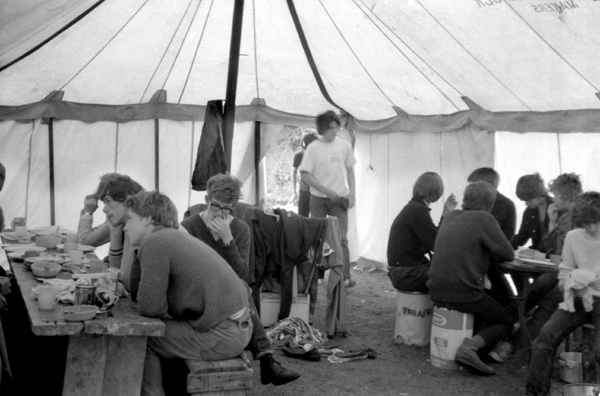 |
||
| Greg Surrell (bearded) Roger Weatherley (arms out) and others inside the marquee. | Food time in the marquee. | ||
|
More photos to be added soon |
|||